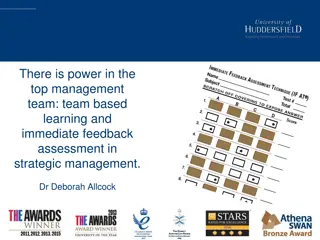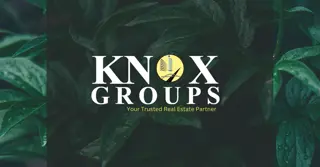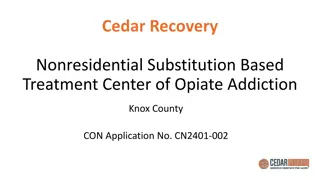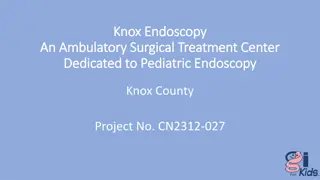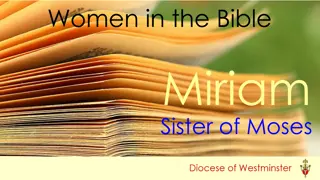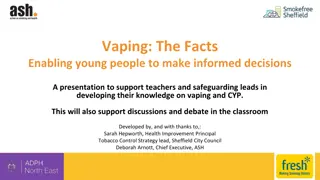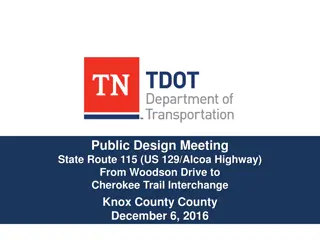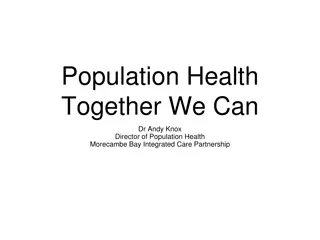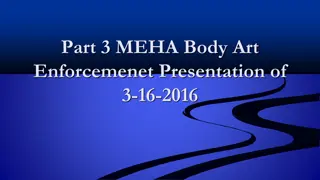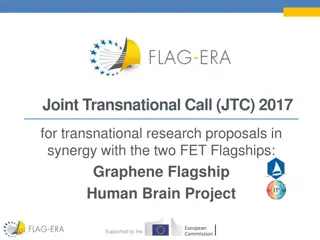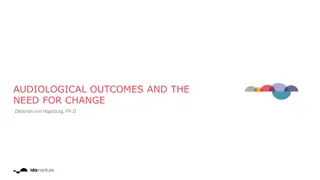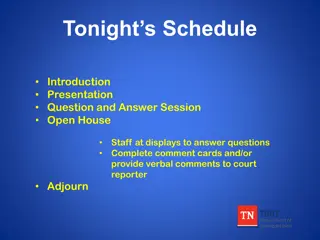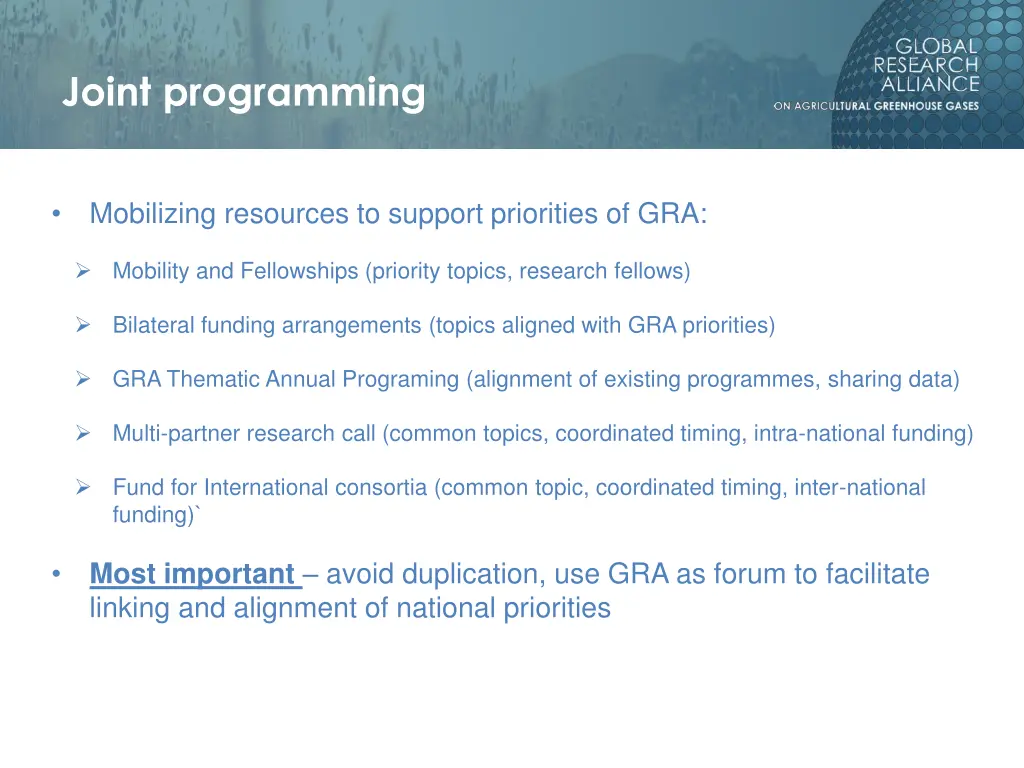
Mobilizing Resources for GRA Priorities in Joint Programming
Explore joint programming initiatives focusing on GRA priorities such as mobility, fellowships, bilateral funding arrangements, thematic annual programming, and more. Learn about GRA's flagship guiding principles and efforts in enhancing GHG inventories for sustainable development.
Download Presentation

Please find below an Image/Link to download the presentation.
The content on the website is provided AS IS for your information and personal use only. It may not be sold, licensed, or shared on other websites without obtaining consent from the author. If you encounter any issues during the download, it is possible that the publisher has removed the file from their server.
You are allowed to download the files provided on this website for personal or commercial use, subject to the condition that they are used lawfully. All files are the property of their respective owners.
The content on the website is provided AS IS for your information and personal use only. It may not be sold, licensed, or shared on other websites without obtaining consent from the author.
E N D
Presentation Transcript
Joint programming Mobilizing resources to support priorities of GRA: Mobility and Fellowships (priority topics, research fellows) Bilateral funding arrangements (topics aligned with GRA priorities) GRA Thematic Annual Programing (alignment of existing programmes, sharing data) Multi-partner research call (common topics, coordinated timing, intra-national funding) Fund for International consortia (common topic, coordinated timing, inter-national funding)` Most important avoid duplication, use GRA as forum to facilitate linking and alignment of national priorities
GRA Flagships guiding principles GRA added value why GRA and not another entity? Inclusive all members should be able to participate if they wish Relevant all members get something out of series of flagships Solution focused concrete products/results Multifaceted more than just GHGs Increasing capacity/capability Enteric fermentation GHG inventories Soil carbon sequestration Low emissions rice Nitrous oxide Circular food systems
GHG inventories Enhancing inventory structure Building capability GRA facilitates linking: Analyses of current methodologies for estimating GHG emissions adopted in national GHG inventories by source, barriers to adoption of advanced methods and experiences of countries in adopting advanced methods (networks and reports from international workshops, technical and summary papers) Regional and source-specific guidance for the development of advanced inventories Tier 2 inventory development utilise expertise and experience of GRA Members Identification of training needs; country-specific guidance and training needs developed jointly with countries. Guidance for development and adoption of modelling approaches (i.e. Tier 3) for specific sources within inventories. Delivery of targeted technical training to improve emission factors and design inventories that work with existing national and regional data sources. Acquisition and administration of data Incorporation of improved emission estimates in emissions databases (e.g. IPCC-EFDB, GRAMP, SAMPLES, MAGGnet) and activity databases. Demonstrating mitigation in NDCs Provide targeted support for countries for designing agricultural monitoring, reporting and verification (MRV) within NAMAs or Low Emissions Development pathways based on improved inventories National and regional research projects that validate existing measurements and identify and validate approaches (measurements and modelling methodologies) to reduce the emissions intensity of food production and ensuring that those gains can be captured in inventories. Dissemination of improved estimates of GHG emissions developed from regional and national projects to inform the development and verification of methodologies by the IPCC and other inventory support mechanisms
Inventory Flagship projects Shared Farm system/production typologies (CCAFS and Inventory Network) 'Best practice guidelines for incorporation of mitigation into national inventories. Guidance on Inventory Tiers Developing guidance for good implementation of higher Tier methods in national inventories Developing guidance for good implementation of Tier 3 models in national inventories Database and Inventory Refinement for GHG Emissions associated with Manure and Nitrogen Management Developing guidance for improving emissions from manure management in national inventories Towards a national livestock methane database project Identifying emissions and mitigation options by mapping analogous production systems Establishment of GHG measurement, mitigation, adaptation and inventory Centre in West Africa.
Soil Carbon Sequestration Online collaborative knowledge hub Developing solutions Monitoring solutions Adopting solutions Decision support toolbox Maps of SCS potential (e.g. to reach the 4 per 1000 aspirational target) Maps of crop and pasture practices suited to reach SCS targets Implications of SCS practices for - yields, - drought tolerance and climate change adaptation - N2O and CH4 emissions, energy use Costs and benefits of transitioning to SCS practices Capacity building, knowledge transfer and training Methods to certify SCS Tiered methodologies for monitoring, reporting and verifying (MRV) soil organic carbon (SOC) stocks in crop and pasture systems Handbooks and guidelines for project scale MRV adapted to regional contexts and agricultural systems Technologies for rapid SOC stock verification Modelling of SOC stock change in crop and pasture systems Enabling environment Regional stakeholder workshops on SCS Criteria for sustainable SCS projects supporting livelihoods Assessment of barriers to the adoption of SCS practices Value chains, business models and policy options Research funding strategy and international research cooperation GRA facilitates linking:
Soil Carbon Sequestration Flagship projects Systematic review of management practices on soil carbon [Sweden, UK, USA, Spain, Canada, France]. Economics of SCS, typology of activities and barriers [IIASA, Australia, UK, USA]. Survey of long term experiment sites that may have soil carbon data, identify where the IRG could add value. (LTAR, ANAEE, MAGGnet, GLTEN project at Rothamsted Research, ISRIC) Rapid assessment of indirect methodologies for soil carbon stock change [New Zealand, USA, Australia, Canada]. Soil microbiome and the implications for soil health [USA, Canada]. Workshop on carbon offset methods to bring together different initiatives [France, Australia]. Novel sequestration options e.g. biochar (for later consideration). Consider organic soils (Peatlands) activities of the Croplands Research Group in the Flagships.
Low emissions rice Developing solutions Improving quantification Adopting solutions Building capabilities GRA facilitates linking: Water management conducting multi- country experiments on commercial size farms to assess the effects of AWD as a mitigation solution Organic matter management identification, testing & quantification of improved management of crop residue and manure as a mitigation solution Cultivar selection identification, testing & quantification of high yielding rice cultivars with low CH4 emission Database compilation sharing experimental information and emission data among members Improved emission factors improving emission and scaling factors for CH4/N2O emissions and soil C stock changes in country/region by analysing emission monitoring data Modelling development and inter-comparison of process-based models to simulate CH4/N2O emissions soil C stock changes Workshops to enhance the technical and institutional capacity to conduct relevant GHG research in the Group Coordinated networks of scientists and extensionists, private-sector, and farmers for accelerating the wide-scale adoption of best-fit management options Identification of areas where AWD can be applied and optimized to reduce yield loss risks, water and carbon footprints of rice systems MRV guidelines measurement, reporting, and verification (MRV) guidelines for implementing the solutions to GHG mitigation actions Promotion of solutions by communication of tested mitigation solutions with stakeholders to support NAMAs and NDC
Rice Flagship projects On farm assessment of multi-beneficial improved water management techniques, reducing costs, water use and gas emissions in America s rice systems. Multi-country on-farm assessment of multi-beneficial integrated management techniques in the rice sector of Asia Identification of high yielding rice cultivars as related to low methane (CH4) emissions
Nitrous Oxide proposal Development of solutions Improved quantification of nitrous oxide emissions and mitigation Implementation of mitigation solutions to support Nitrogen management: rate, formulation, timing and placing Improved Nitrogen management to improve crop yield while minimizing reactive nitrogen losses including N2O emission. BNI-enabled staple crops and pastures - Improve/introduce BNI-capacity into staple crops and pastures to reduce nitrogen losses and improve NUE. Develop novel production systems that are low-nitrifying and with reduced N2O emissions - Integrate high-BNI capacity pastures (e.g. Brachiaria sp) with low- BNI-capacity annual crops (e.g. maize or rice)in agro-pastoral systems for low-nitrifying and low-N2O emitting Microbiome Improved understanding of the processes involved in Nitrous Oxide formation, improve nitrogen fixing symbiosis Soil quality and resilience - Improved indices of soil quality and resilience to enhance soil Carbon sequestration to mitigate greenhouse gas emission Biomass management - Improved biomass management strategies to mitigate emissions and sequester soil carbon. Improved emissions factors the determination of nitrous oxide emission and yield scaled-emission Improved activity data - low cost innovative generation of data on crop performance, nitrous oxide emission and soil carbon sequestration Cropland Tier 2 inventory development utilise expertise and experience of GRA Members Identification of locally appropriate mitigation actions Capacity building e.g. hands on workshops on N2O measurements and calculations


